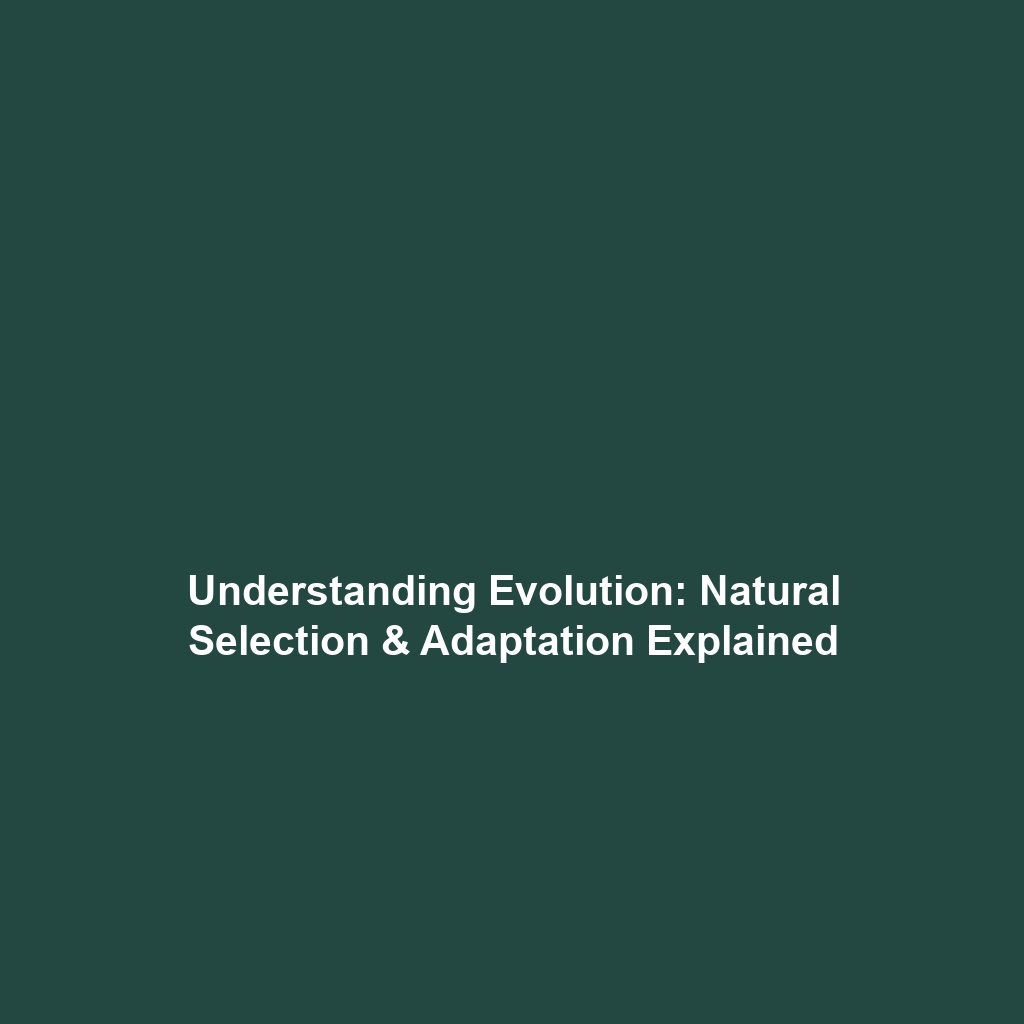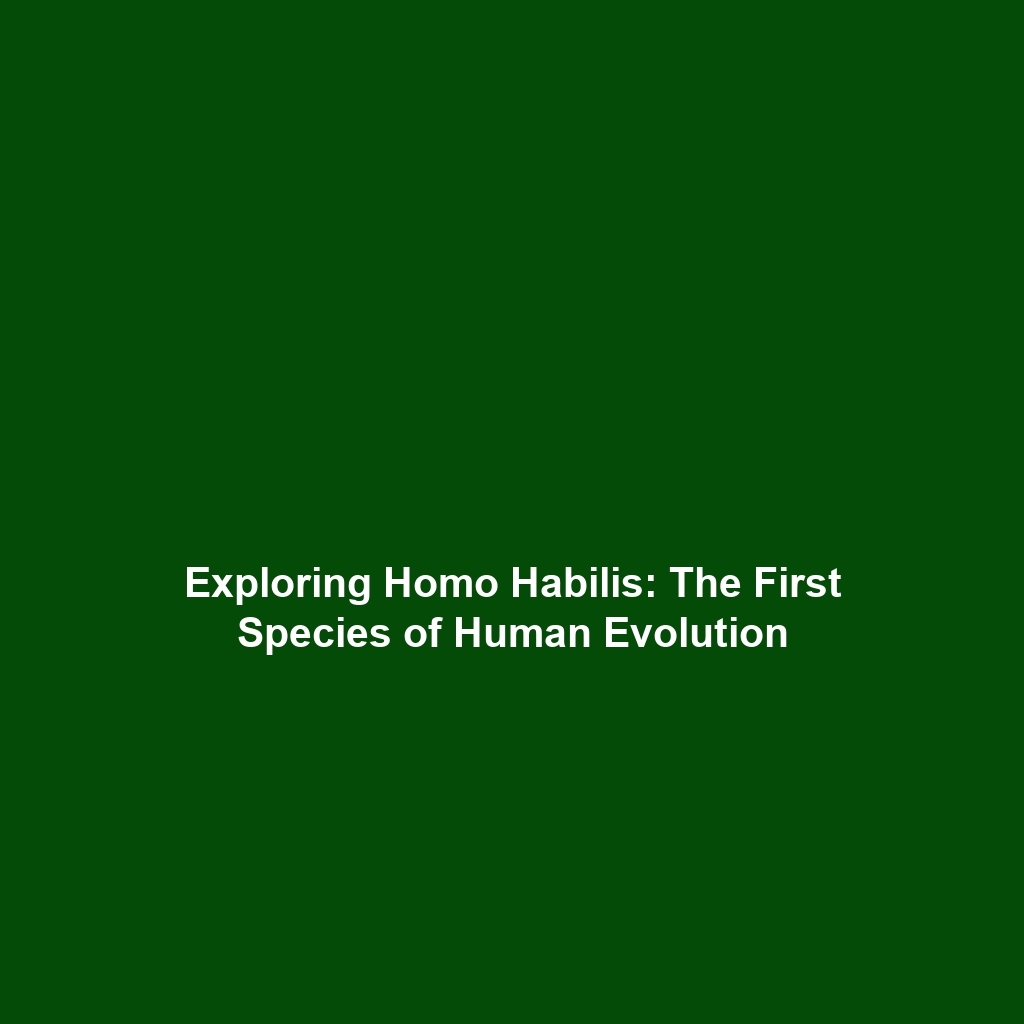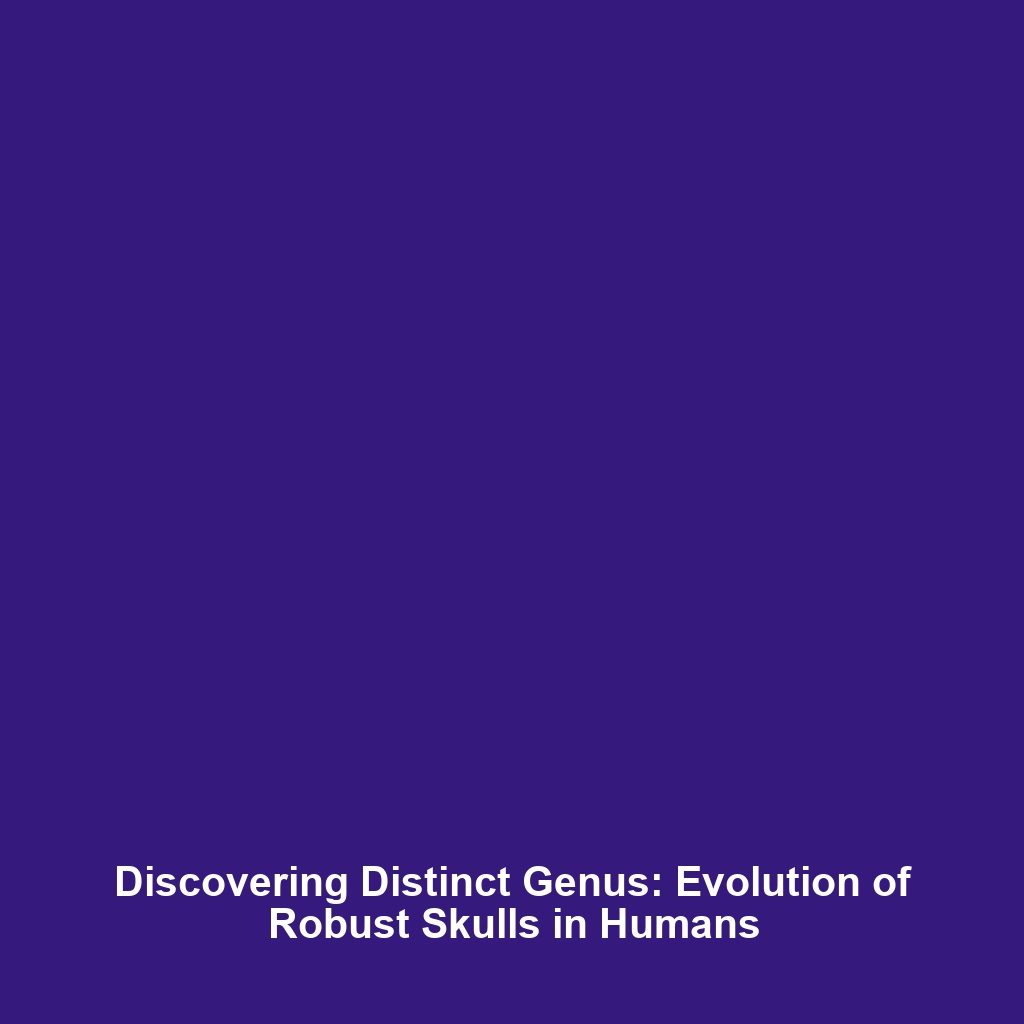Key Concepts: Evolutionary Theory, Natural Selection, and Adaptation in Human Evolution
Category: Human Evolution
Introduction
The study of evolutionary theory, natural selection, and adaptation encompasses the foundational principles that explain the changes in organisms over time, ultimately shaping the course of human evolution. Understanding these concepts is vital as they provide insights into how humans have evolved in response to environmental pressures and survival challenges. The relevance of these theories extends far beyond academic circles, influencing various fields such as biology, anthropology, and medicine.
Key Concepts
Evolutionary Theory
Evolutionary theory posits that species change over generations through mechanisms including natural selection and genetic drift. This theory was most prominently articulated by Charles Darwin, who argued that the diversity of life arises from common ancestry.
Natural Selection
Natural selection is the process whereby organisms better adapted to their environment tend to survive and produce more offspring. This mechanism is one of the primary forces driving human evolution, as certain traits that confer advantages in survival have become more prevalent in human populations over generations.
Adaptation
Adaptation refers to the physiological changes that occur in organisms in response to environmental challenges. In terms of human evolution, adaptations may include changes in skin color, body size, and metabolic processes, all reflecting the ongoing relationship between humans and their environments.
Applications and Real-World Uses
The principles of evolutionary theory, natural selection, and adaptation have numerous real-world applications:
- Medical Research: Understanding how diseases evolve can help in developing effective vaccines and treatments.
- Conservation Biology: This knowledge assists in preserving endangered species by identifying key adaptive traits.
- Agriculture: Farmers use these concepts to breed plants and animals that can withstand environmental challenges, such as pests and climate change.
Current Challenges
Despite the foundational importance of these concepts in human evolution, several challenges persist:
- Lack of Paleontological Evidence: Incomplete fossil records make it difficult to trace evolutionary pathways.
- Misunderstanding of Natural Selection: Misconceptions about the mechanisms of evolution often lead to inaccuracies in public understanding.
- Ethical Implications: The applications in genetic engineering raise ethical concerns regarding human enhancement and biodiversity.
Future Research and Innovations
Ongoing research in evolutionary theory, natural selection, and adaptation aims to enhance our understanding and application of these concepts:
- Genetic Technologies: Innovations such as CRISPR are poised to revolutionize our approach to genetic diseases.
- Climate Change Adaptation: Research is focused on how species, including humans, may need to adapt to rapidly changing environments.
- Interdisciplinary Studies: Future studies are looking to combine genetics with anthropology, providing a holistic view of human evolution.
Conclusion
In summary, the key concepts of evolutionary theory, natural selection, and adaptation play a crucial role in our understanding of human evolution and its implications for the future. As research continues to evolve, it is important for both the scientific community and the public to stay informed about these developments. For further insights into related topics, check out our articles on Human Evolutionary Patterns and Future Trends in Human Genetics.




